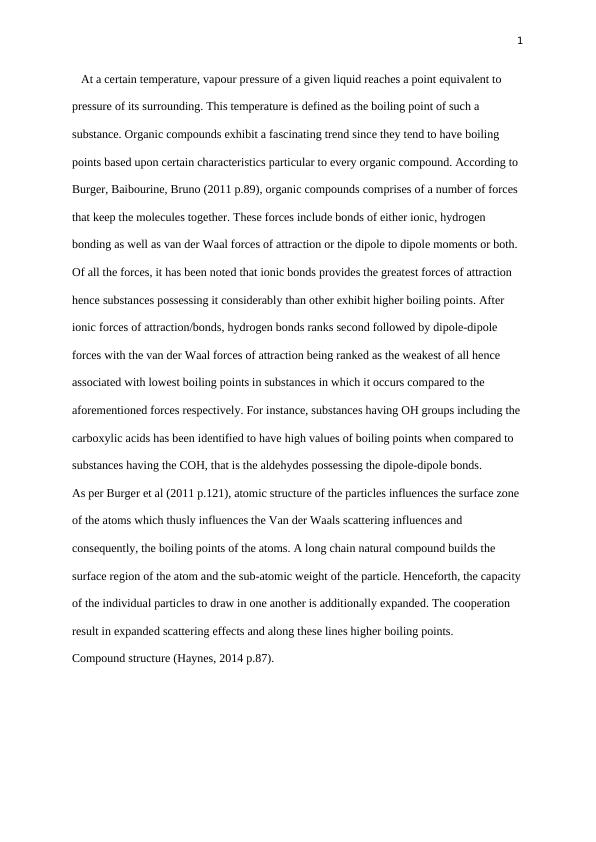Trends in Boiling Points of Organic Compounds
Added on 2023-06-03
7 Pages1740 Words196 Views
End of preview
Want to access all the pages? Upload your documents or become a member.
Difference in Boiling Points of Butanoic Acid and Pentanal
|6
|826
|252
Factors Affecting Boiling Points of Organic Compounds
|8
|1485
|248
Boiling Points of Organic Compounds
|8
|1402
|17
The Organic Chemistry
|7
|1498
|818
BHS105A Biochemistry Assignment
|12
|3202
|730
Structure and Function of Biomolecules and Genetic Expression
|9
|2244
|122


